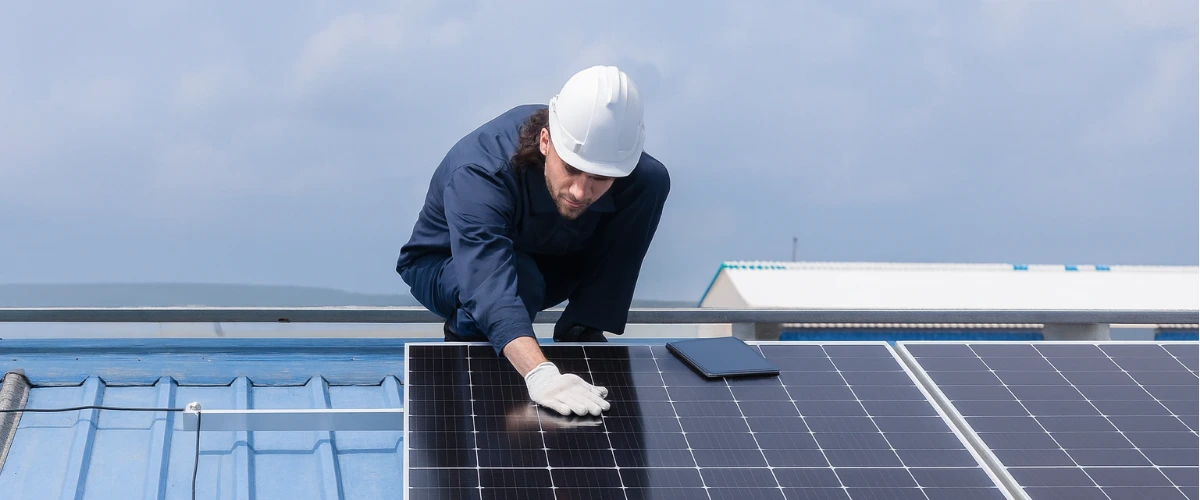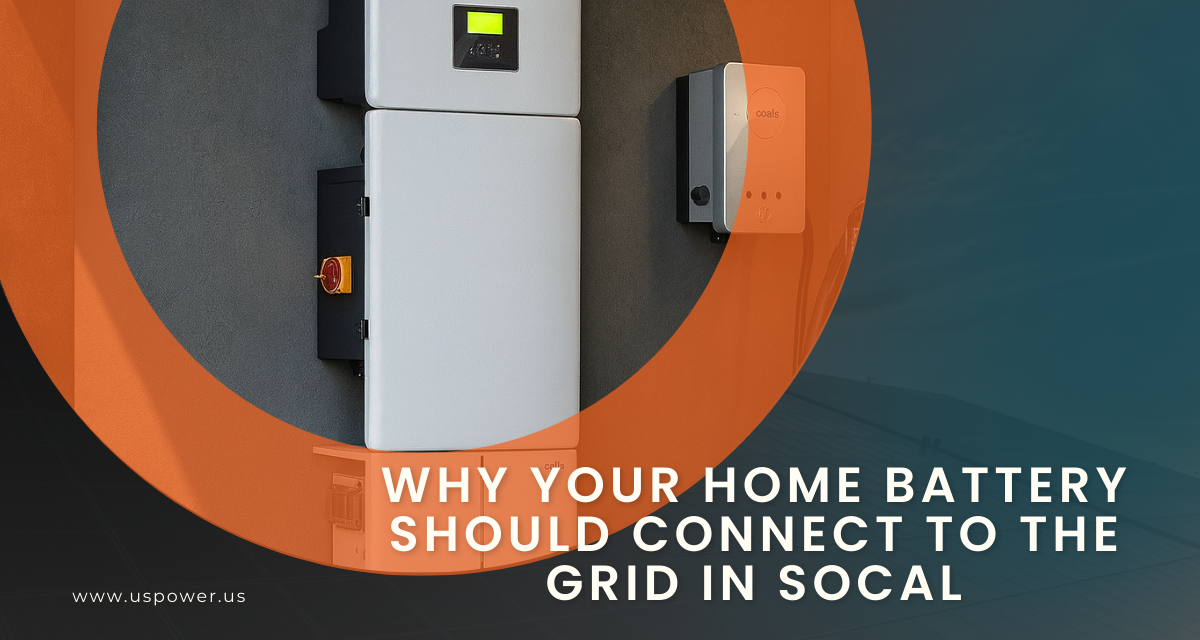Top Reasons Your Solar Isn’t Meeting Expectations

Solar and Roofing Advisor
Understand why your solar system may fall short, from shading and tilt to battery limits, and learn strategies from US Power to ensure full performance.

You’re living in sunny Southern California — so when your brand‑new solar system starts producing 60% less than what was estimated, it’s natural to feel uneasy. You planned for strong production to offset your bills and maybe charge your home battery, but the numbers just aren’t adding up.
This isn’t just a hypothetical: a homeowner on r/solar reported nearly that shortfall after turning their system on. Even on sunny days, their output didn’t match the forecasted curve. And with payment to the installer still pending, the stakes are high.
If you're seeing this kind of underperformance, should you be concerned? Short answer: yes — but there are concrete steps you can take. And with the right system, the right design, and the right partner (yes, that’s us — US Power, factory-direct partner with QCells), you can still get the value you signed up for.
How Solar Production Is Estimated: The Basics
PVWatts & Typical Meteorological Year (TMY)
Most residential solar proposals rely on data from PVWatts, a modeling tool developed by NREL (the U.S. National Renewable Energy Laboratory). That model uses Typical Meteorological Year (TMY) data, which represents “average” conditions over decades—not real-time weather.
The Department of Energy's Energy.gov
In practice, some days will be better than average, but many will be worse — clouds, seasonal changes, or shading can all drag your production below the modeled “ideal curve.”
NetZero App / Monitoring Tools
Many homeowners use tools like NetZero to monitor and compare actual output to estimates. These apps often produce daily and hourly estimates that are close to what the installer quoted, which is good — but they aren't perfect. As some users note, NetZero can over- or underestimate, especially under variable sky conditions.
Real-World Variability
Even with a well-designed system, things like rooftop orientation, shading, tilt, and seasonal daylight variation can mean your best days don't align with the “bell curve” from PVWatts. Several homeowners point out that short winter days, low sun angles, or tree shadows seriously dent their generation.
Common Reasons for Underperformance
Based on real-world cases (like the Reddit post) — and our experience at US Power — here are the key culprits when actual solar output comes in well under expectations.
- Shading — Especially Unseen or Unexpected
A major cause of low production is shade on the panels. In the shared case, a drone survey revealed morning shadows from a nearby tree, exactly where the panels were installed. Shadows don’t need to cover the whole array to have a big impact — even partial, intermittent shading can drag down string performance significantly. - Wrong Azimuth or Orientation
In that same case, the homeowner discovered their array was installed facing west (azimuth 251°), despite plans showing a more optimal south (azimuth ~161°) orientation. Facing west can reduce morning production and skew your output curve. As one commenter pointed out, while west-facing panels may have an advantage for late-afternoon production (especially under certain rate structures), they generally yield less overall for a system designed to maximize daily output. - Pitch / Tilt Issues
If the tilt (pitch) of your panels doesn’t match the design assumptions, it can change how much sun they catch—especially in winter or early/late in the day. See our guide to finding the perfect solar tilt angle for tips. - Wiring or Installation Mistakes
Some underperformance comes down to simple installation errors: inverted strings, incorrect wiring, or misconfigured CTs (current transformers) at the inverter. In a similar Reddit case, two of three strings were inverted, and correcting them made a huge difference. - Battery Charge Limitations / Clipping
If you have a Powerwall 3 (or similar), you might hit a charge-rate limit. For example, a PW3 can only charge at 5 kW max from solar, even if the inverter produces more. That means excess solar beyond that may not go into the battery, and depending on your interconnection status, may not export efficiently either. Learn more in our solar battery guide. - Seasonal & Weather Factors
Late fall, early winter, or overcast weather can drop your generation significantly — and estimates that use “typical” weather don’t always capture short-term weather swings. Several posters reminded the original homeowner that their timing (autumn / early winter) may simply be less favorable.
What You Can Do: A Homeowner’s Action Plan
Inspect with a Drone or Google Earth
Use a drone (if you can) or Google Earth’s 3D view to assess shading and angle. Numerous homeowners recommend this to spot trees or nearby structures casting shade.
Compare what you see to your design plan. Does the as-built orientation match what your installer proposed?
Ask for a Shade Study / Production Analysis
Request a shade study from your installer — ideally one that shows impact by string or microinverter.
Ask for a string-by-string production test, to verify all strings are performing as expected. If one string is underperforming (or wired incorrectly), you’ll want that on record.
Check Wiring / Inverter Configuration
Ask your installer for wiring diagrams or photos of how panels are connected.
Confirm the azimuth and tilt used in the design vs. actual installation.
Have them verify CT configuration — wrong configuration can mess up reported power and production.
Monitor Powerwall Behavior
If you have a Powerwall 3, monitor how quickly it charges and whether it’s saturating at the 5 kW rate.
Use performance data (your monitoring platform / app) to see if solar production is being “clipped” because of battery limits.
Leverage Your Payment
Delay full payment until performance is validated (or a fix is confirmed).
Ask for a performance guarantee, or reference any existing terms in your contract. Many installers include this; if you can prove consistently low output, you can negotiate rework or compensation.
Plan for Long-Term Optimization
Trim or remove any offending trees / vegetation. Shade can be the low-hanging fruit for improving performance.
If orientation or tilt is suboptimal, explore whether reconfiguration is worth it.
Consider adding or optimizing battery storage to capture more of your day’s production.
Why an Expert, Factory-Direct Partner Matters — And How US Power + QCells Helps
Exclusive QCells Panels, Factory-Direct Pricing
As an official factory-direct representative of QCells, we deliver American-made panels straight to your rooftop—no middlemen markups.
Made in the USA, Built to Last
QCells’ major manufacturing facility is based in Dalton, Georgia, and by 2025, they’re expanding their U.S. solar supply chain with their Cartersville plant.
Sustainability Credentials
QCells panels have earned the EPEAT Low‑Carbon Solar designation, reflecting a lower carbon footprint than many imported panels.
Design & Warranty Support
With US Power + QCells, you get more than equipment — you get rigorous system design, certified installers, and access to manufacturer warranties (often 25 years for product + performance).
Battery-Ready Solutions
We’re experienced in integrating solar + storage systems. Whether it's a Powerwall 3, QCells’ own storage platforms, or other options, we help size and configure so your system works optimally given your usage and rate structure.
Why This Matters in Southern California — Especially Under NEM 3.0
Understanding how your system performs is especially critical now in California, because of the Net Energy Metering 3.0 (NEM 3.0) rules for new solar systems. Under NEM 3.0, export compensation can be significantly lower, which means maximizing self-consumption (via battery storage) is more valuable than ever.
In other words: underperforming production hits harder when export credits are less favorable. That’s why accurate design, good installation, and thoughtful energy storage are non-negotiable.
When You Should Escalate: Signs You Have Ground to Push Back
Here are red flags that suggest it's not just “weather” or “just a small issue” — and you may need to press your installer for accountability or correction:
- Your system consistently underperforms on clean, sunny days.
- Drone or site surveys reveal unexpected shade that wasn’t factored into your design.
- The as-built azimuth or tilt doesn’t match your signed design.
- There's no production guarantee, or your installer refuses to provide string-level performance data.
- Your battery charging behavior seems clipped or limited by maximum power constraints.
If you spot these, don’t finalize the payment. Bring up the discrepancy, demand a test, and request steps to remediate.
Proactive Tips for Future Solar Owners in SoCal
To avoid these issues in the first place, consider these best practices when planning your solar + storage system:
- Ask for a Shade Analysis Up Front
During your design and proposal phase, make sure your installer includes a shade study. Confirm how trees, surrounding buildings, and seasonal sun angles were evaluated. - Use South-Facing (or Near-South) Tilt When Possible
Unless there is a compelling reason — like heavy shading or rate-timing advantages — a near-south orientation typically yields the most consistent production. - Be Careful with Export Incentives
With NEM 3.0, the value of exporting to the grid is lower. This makes self-consumption through storage (like with Powerwall or QCells battery) more beneficial. Ask your installer to model for self-consumption, not just for “export + credit.” - Design for Battery Limits
Understand your battery’s charge rate (e.g., 5kW for Powerwall 3) and make sure your inverter and production design reflect that. Oversizing your array without accounting for your battery’s ability to absorb power can lead to wasted generation. - Request Performance Guarantees
Push for a contract that explicitly includes performance testing and a guarantee. Good installers will back up their designs — and you should make sure they do.
If your solar system is far underperforming — especially compared to what your proposal or monitoring app said — you’re absolutely justified in investigating. Don’t chalk it up to “just bad weather” without doing the homework.
At US Power, we believe in transparency, performance, and delivering American-made quality through our exclusive QCells partnership. If you're concerned about your solar production (or want to design a system right the first time), we’re ready to help:
- We can walk you through a shade study.
- We’ll verify your system’s orientation, tilt, and wiring.
- We’ll model your system with battery + self-consumption, especially under NEM 3.0.
- We stand by performance guarantees, so your solar delivers what you expected — or we fix it.
Ready to take the next step? Schedule an appointment today for a free system review or a production assessment. Let’s make sure your solar investment in Southern California truly works for you.
Artículos relacionados
Nuestros blogs relacionados
Find out which inverters and batteries will work best with Qcells solar panels.
Grid-connected solar batteries offer backup, savings, and support under NEM 3.0.
Explore backup power solutions to keep your home running during power outages.
Nuestros socios de marcas de energía solar y techos








Empoderamos a las comunidades y las empresas para que aprovechen las energías limpias y renovables energía solar soluciones que impulsan el crecimiento sostenible.
Derechos de autor © 2025 US POWER | Energía solar y techosUS Power - Axia by QCells. All Rights Reserved.
La privacidad es importante para nosotros, por lo que tiene la opción de deshabilitar ciertos tipos de almacenamiento que pueden no ser necesarios para el funcionamiento básico del sitio web. El bloqueo de categorías puede afectar a su experiencia en el sitio web.
Imprescindible
Estos elementos son necesarios para habilitar la funcionalidad básica del sitio web.
Personalización
Estos elementos permiten que el sitio web recuerde las elecciones que ha realizado (como el nombre de usuario, el idioma o la región en la que se encuentra) y proporcionan funciones mejoradas y más personales.
Mercadeo
Estos artículos se utilizan para ofrecer publicidad que sea más relevante para usted y sus intereses.
Analítica
Estos elementos ayudan al operador del sitio web a comprender cómo funciona su sitio web, cómo interactúan los visitantes con el sitio y si puede haber problemas técnicos.
Nosotros y nuestros socios externos utilizamos cookies y otras tecnologías para mejorar y rastrear su experiencia en este sitio, realizar análisis y personalizar el marketing para usted. Al usar el sitio, aceptas que usemos estas tecnologías, incluido el registro y el monitoreo de tus interacciones con el sitio.
¡Obtenga una estimación solar instantánea usando el satélite!










